
Before taking over the news with the coronavirus or COVID-19 pandemic, Wuhan has weathered thousands of years of history. Discover Wuhan for its historic and cultural properties through these facts.
- Wuhan was established 3,500 years ago.
- It is the 9th most populated city in China.
- Wuhan is one of the 9 National Central Cities of China.
- 11 million people reside in Wuhan.
- Wuhan officials imposed a lockdown since January 2020.
- Wuhan is the capital of the Hubei Province of China
- The name Wuhan comes from Wuchang and Hankou.
- Wuchang and Hankou were the two major cities along the Yangtze River.
- The people of Wuhan speak Southwestern Mandarin.
- Wuhan was officially established in 1927.
- 13 districts form the city of Wuhan.
- Until the 21st century, Wuhan earned the most from agriculture.
- Now, Wuhan focuses on the manufacturing industry.
- 79.2% of the population of Wuhan do not practice religion or instead worship ancestors.
- Wuhan was the 5th Chinese city to have a metro system.
- Buddhism is the most practiced religion in Wuhan, with 14% of the population adhering to the belief.
- Wuhan used to be China’s capital in 1927.
- UNESCO designated Wuhan as a Creative City in 2017.
- Wuhan houses 35 higher education institutes, making it an education hub for China.
- From the 1890s until the present, Wuhan has relied on the steel industry as the backbone of its economy.
Wuhan Facts Infographics
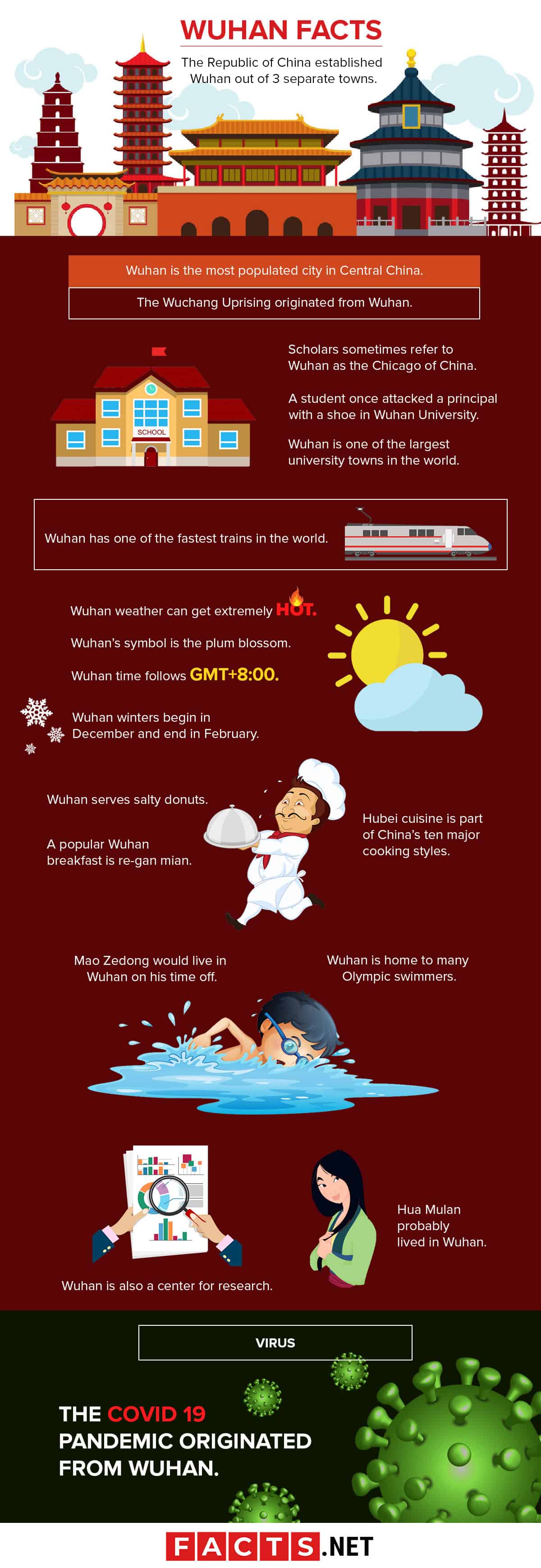
Wuhan is the most populated city in Central China.
At a population of 11 million people, Wuhan has the densest population in all of Central China, and ranks 9th in the most populous cities of China.
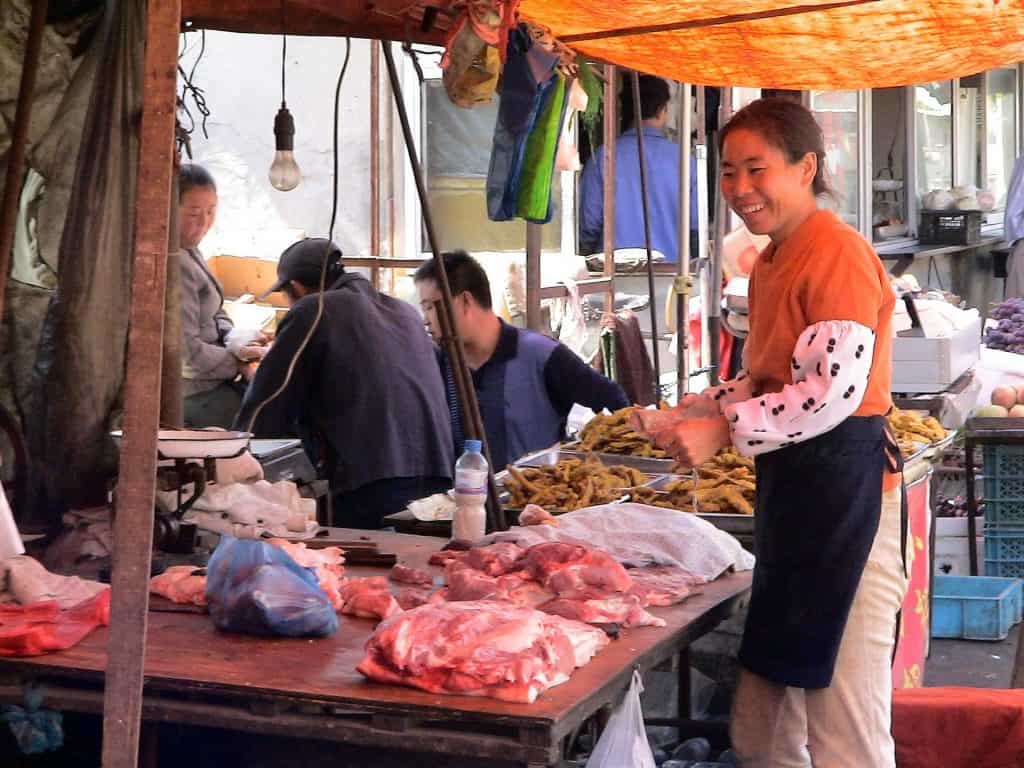
The Republic of China established Wuhan out of 3 separate towns.
Long before its reputation as a center for industry, academics, and research, Wuhan used to be the three separate towns of Hanyang, Hankou and Wuchang. Because of its location between the Han and Yangtze River, the area evolved into a center for trade and business through time. However, it wasn’t until 1926 that Republic of China unified it as the city of Wuhan.
Scholars sometimes refer to Wuhan as the Chicago of China.
You could travel to almost all parts of China from Wuhan, which is why tourists have termed it the Chicago of China. Overall, Wuhan is a center for railways, trains, and docking ferries and ships.
Wuhan has one of the fastest trains in the world.
The Guangzhou-Wuhan High Speed train can reach a speed of 394 km/h and is one of the world’s fastest trains.
The Wuchang Uprising originated from Wuhan.
Also called the Wuhan Uprising, the revolt that ended the last imperial dynasty in China took place on October 10, 1911 in Wuchang. The uprising was orchestrated by two groups of the New Army led by Sun Yat-sen.
A student once attacked a principal with a shoe in Wuhan University.
It seems that years after Wuchang, the spirit of uprising lives on in Wuhan. As a protest to the censorship of the Internet, a student attacked Fang Binxing with a shoe at Wuhan University in 2011. The Huazhong University of Science and Technology student referred to herself as Hanunyi. The shoe attack was a deliberate protest to the Great Firewall of China, which Binxing helped bring to completion.
Upon investigation, the student had discussed the shoe attack to her followers on Twitter and located Fang’s lecture through mutuals. After the shoe hit Binxing on the chest, “Hanunyi” walked out as other students were keeping the teachers from detaining her. The viral incident is only one of the most interesting Wuhan facts.
Wuhan weather can get extremely hot.
Wuhan is prominently known as one of the three “stoves” in China for its boiling heat in the summer. Due to its geographical location and the North Asia tropic monsoon, hot air tends to get trapped in the atmosphere. Wuhan shares its “stove” title with Chongqing and Nanjing. However, Wuhan experiences all four seasons.
Wuhan’s symbol is the plum blossom.

Throughout the years, the plum blossom has represented Wuhan as the city’s emblem. The reason is historic but still relevant to the present. During the Qin and Han dynasties, plums were used medicinally. Now, plums still play a role in medicine and research in Wuhan. Traditional new year practices even involve the planting of plums.
Wuhan time follows GMT+8:00.
Like the rest of China, Wuhan follows the China Standard Time.
Hubei cuisine is part of China’s ten major cooking styles.
Dating back to ancient Chu cuisine 20 years ago, Hubei cuisine represents one out of 10 major Chinese cooking styles. Some distinct dishes include blunt-snout bream in clear soup, ham with flowering Chinese cabbage. For Wuhan in particular, citizens practice eating dìcài zhǔ jīdàn (地菜煮鸡蛋) a medicinal egg dish eaten on the 3rd day of the third month of the lunar calendar.
A popular Wuhan breakfast is re-gan mian.
Also known as hot and dry noodles, re-gan mian takes freshly boiled noodles and mixes it with sesame paste. Wuhan citizens typically have this noodle bowl during guozao (breakfast).
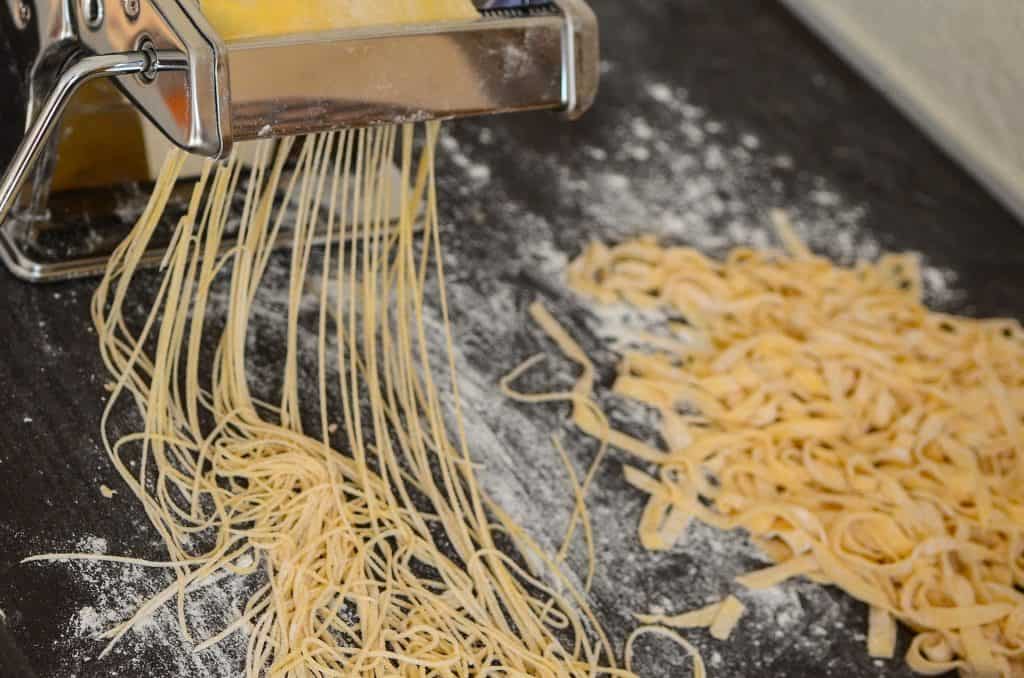
Wuhan serves salty donuts.
For snacks, Wuhan citizens usually eat Mianwo (麪窩) or salty donut for a quick fix. This savory donut is much thinner than the usual confectionery donut.
Wuhan hosts the one of the oldest operas in China.
The Han opera in Wuhan has operated as one of China’s oldest and most popular operas. Towards the end of the Qing dynasty, Han opera combined elements of Hui opera which created Peking opera. To date, Peking opera has been the most popular modern opera in China. As such, scholars refer to Han opera as the mother of Peking opera.
Wuhan winters begin in December and end in February.
Despite reaching seasonal highs of 44.5°C, Wuhan experiences a few couple months of 2°C lows.
Wuhan is one of the largest university towns in the world.
Wuhan houses 53 universities within its city. With over 1 million university students, Wuhan is one of the biggest college towns in the world. In fact, the city’s population of one million plus university students make Wuhan one of the largest university towns in the world.
Mao Zedong would live in Wuhan on his time off.
Mao Zedong often resided in Wuhan’s East Lake State Guesthouse during the summer. After the People’s Republic of China was founded in 1949, Mao went to Wuhan more than any other Chinese town, outside of his government headquarters. Mao even made a poem of Wuhan’s Yellow Crane Tower in 1927.
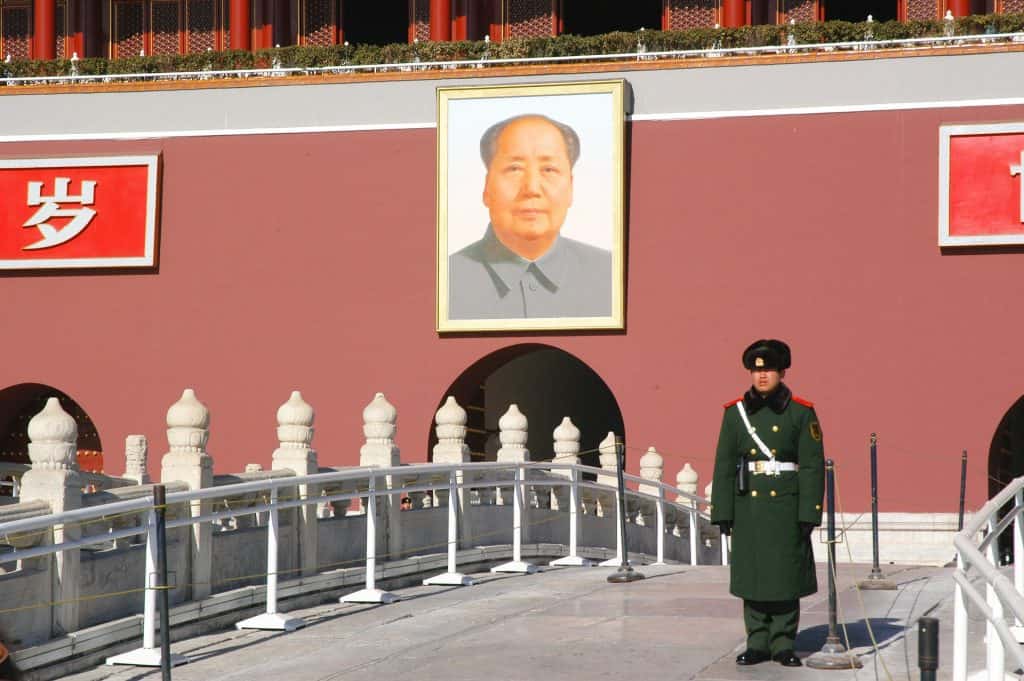
Wuhan is home to many Olympic swimmers.
Whether the nearby bodies of water are just a coincidence, many Olympic swimmers have called Wuhan their home. Champions of Olympic swimming that lived here include Zhou Jihong (gold, 1984 Olympics) and Fu Mingxia (gold, 1992, 1996, and 2000 Olympics.) The Huangshi State Sports School has since scouted skilled children around the country, honing their skills as early as 5 years of age.
Hua Mulan probably lived in Wuhan.
According to theories, the legendary female warrior of the Southern and Northern Dynasties allegedly lived in Wuhan’s Huangpi district. Coincidentally, the star of Disney’s live-action Mulan also hailed from Wuhan.
Wuhan is also a center for research.
Wuhan comprises 3 national development zones, 4 scientific and technological development parks. Along with these industries, over 350 research institutes and 1,656 high tech enterprises are based in Wuhan.
The COVID 19 pandemic originated from Wuhan.
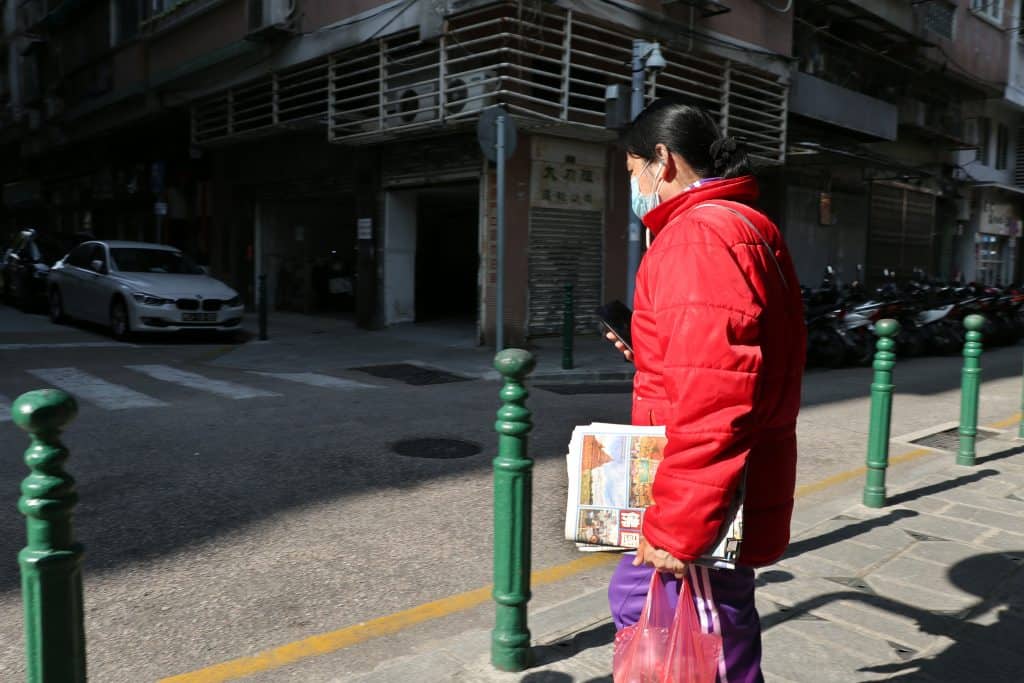
The novel coronavirus was first reported in Wuhan, China, on December 31st, 2019. Since then, it has been the epicenter of the pandemic, with the largest concentration of infected patients. However, as of March 6, 2020, 53,880 recoveries have been recorded in China. There are more recovered patients now in China than infected ones at 23,676 infections. The novel coronavirus is a highly contagious disease that targets the upper respiratory cells and cells in the gastrointestinal tract.
Was this page helpful?
Our commitment to delivering trustworthy and engaging content is at the heart of what we do. Each fact on our site is contributed by real users like you, bringing a wealth of diverse insights and information. To ensure the highest standards of accuracy and reliability, our dedicated editors meticulously review each submission. This process guarantees that the facts we share are not only fascinating but also credible. Trust in our commitment to quality and authenticity as you explore and learn with us.
